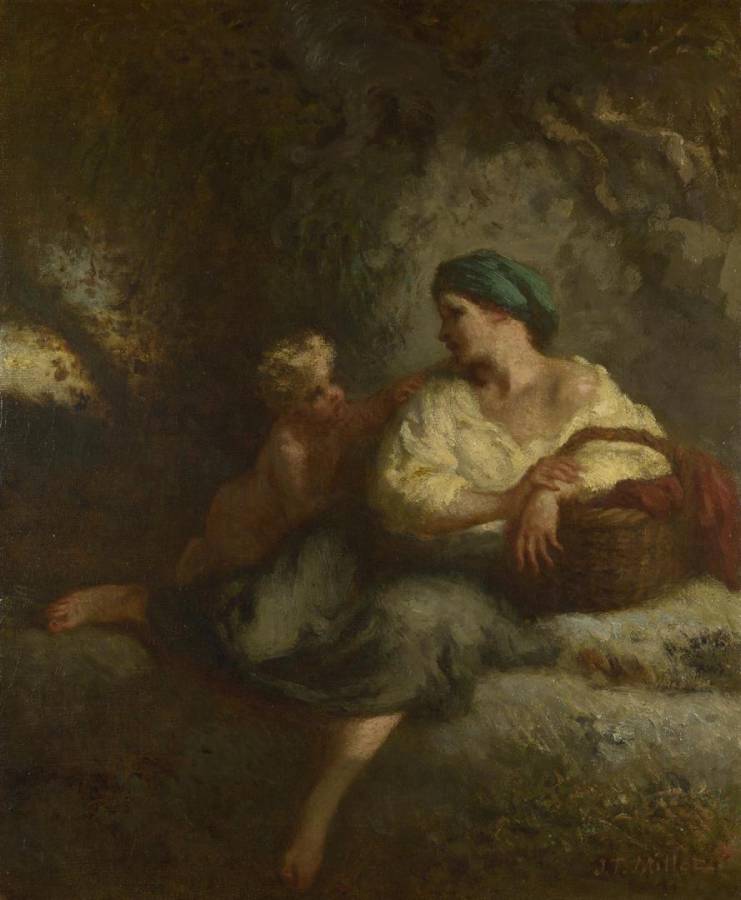Millet, Jean-François (1814-1875)
Femme et enfant dans un paysage (Woman and Child in a Landscape)
1846–1847
Oil on canvas, 45.7 × 38.1 cm
National Gallery, London
A woman sits on a rocky ledge, her head gracefully turned toward a young naked child presented in the guise of a putto or cupid. He appears to be trying to attract her attention. Her position on the bank, leaning on her basket and with one leg crooked up, looks more like a deliberately staged pose than a natural one. This painting is an early example of the rural subject matter that Millet began to explore in around 1845, and which by 1847 formed a substantial portion of his output.
The mid-1840s was also a period when his style was evolving away from what the critic Alfred Sensier termed his manière fleurie (flowery manner) characterised by light touches of colour. His figures gradually became more monumental in style and increasingly smoothly painted. This work can be described as transitional. Millet was still looking to such eighteenth-century artists as Watteau and Boucher, yet at the same time both the majesty of the woman’s profile and her position on the bank can be linked with Michelangelo, particularly his figures in the Sistine Chapel.
The woman’s uncovered shoulder can be compared to an earlier painting, Young Woman (1844–5, Art Institute of Chicago), painted at the height of his manière fleurie. The handling, on the other hand, with its bold, flowing brushwork, looks forward to his work of the later 1840s. This is particularly true of the woman’s deeply shadowed blue-green head covering. Additionally, her heavily outlined profile gives her face a monumental, even sculptural quality. Throughout the picture Millet has used a red-brown paint to underpaint the shadowed areas, and has left it visible, for example in the deep fold of the skirt between the woman’s legs. He has overlaid this layer with thick paint, which in some areas becomes impasto. In areas where the upper layers are more thinly applied, the texture of the canvas shows through. (NG)
